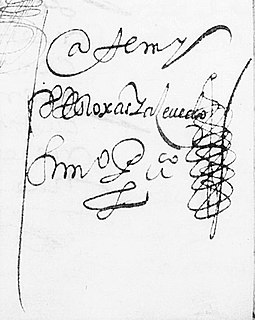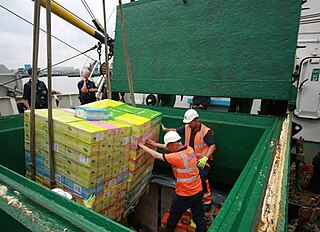
The Viceroyalty of the Río de la Plata was the last to be organized and also the shortest-lived of the Viceroyalties of the Spanish Empire in America.

Juan José de Vértiz y Salcedo was a Spanish colonial politician born in New Spain, and Viceroy of the Río de la Plata.

The Inca plan was a proposal formulated in 1816 by Manuel Belgrano to the Congress of Tucumán, aiming to crown an Inca. After the Declaration of Independence of the United Provinces of South America, the Congress discussed the form of government that should be used. Belgrano proposed that the country be ruled by a Constitutional monarchy headed by an ethnic Inca. The proposal was supported by José de San Martín, Martín Miguel de Güemes and the northern provinces, but found strong resistance from Buenos Aires. The Congress would ultimately reject it, creating instead a Republican government.
Juan Miguel de Esparza (1712–1766) was a Spanish merchant, military man and politician. He held honorary positions during the Viceroyalty of Peru serving as Alcalde, Regidor and Alférez real of Buenos Aires.

Francisco Pérez de Burgos (1558-1617) was a Spanish jurist, military man, merchant and politician, who had a preponderant role during the colonial period of Argentina, where he worked as a public and government notary of the city of Buenos Aires.
Joaquín Canaveris (1789–1840s) was an Argentine attorney, merchant, politician and military man. Among other public positions he served as consignee in The Consulate of Buenos Aires. He had an active participation in the defense of Buenos Aires during the English invasions, serving as an Assistant in the battalion of Tercio de Vizcaínos.
Margarida Cabral de Melo (1570–1631) was a Portuguese noble lady related to the discoverer of Brazil Pedro Álvares Cabral. In 1599 she settled with her husband and children in Buenos Aires. She was one of the most distinguished women in the Río de la Plata, in the early 17th century, owns of luxury homes, farms and vineyards.

Pedro de Roxas Acevedo was a Spanish military officer, and politician, who served in Buenos Aires and Asunción holding honorary positions, including the post of Governor of the Río de la Plata and Paraguay, on an interim term between January 8, 1641 to July 17, 1641.
Diego Gutiérrez de Humanes (1607-1660s) was a Spanish politician and military man, who served in the Viceroyalty of Peru as Lieutenant Governor of the Santa Fe, Argentina.

Tomás Onésimo Canavery (1839–1913) was an Argentine Catholic priest and military chaplain, who served under the command of Bartolomé Mitre during the War of the Triple Alliance.

Mateo Leal de Ayala (1579-1627) was a Spanish army officer and politician, who served during the Viceroyalty of Peru as alcalde, teniente de gobernador and gobernador of Buenos Aires and Paraguay.
Juan Muñoz Bejarano (1610-1670s) was a Spanish military officer and politician, who served during the Viceroyalty of Peru as Alcalde, Regidor and Procurador General of Buenos Aires.

Marie Anne Périchon de Vandeuil (1775-1847) known as "la perichona", was an aristocratic French lady, who had an active role in the politics of Buenos Aires, during the Viceroyalty of the Río de la Plata.
Diego de la Vega (1770s–1812) was a Spanish nobleman, who served as Senior Accountant of the Tribunal de Cuentas de Buenos Aires during the Viceroyalty of the Río de la Plata. He also was the Minister of Real Hacienda de Buenos Aires.

Domingo de Basavilbaso (1709-1775) was a Spanish nobleman, who had a long public performance during the colonial period of Argentina, where he served as alcalde, regidor and comadante in the Fuerte de Buenos Aires.

Francisco Álvarez Campana (1707-1773) was a Spanish merchant and politician, who served during the Viceroyalty of Peru as Regidor and Attorney General of Buenos Aires. In 1755 he founded the Colegio de Huérfanas of the City.
Rafael Macedo Ferreyra (c.1770-1842) was an Argentine lawyer and politician, who served as Auditor de Marina and Asesor of the Comandancia de Matrículas of the Río de la Plata.
Tribunal Mayor de Cuentas de Buenos Aires was a governmental organism of the control of the public accounts of the Viceroyalty of the Río de la Plata.
Tercio de Cántabros Montañeses was a unit of infantry militias of the city of Buenos Aires of active participation during the English invasions to the Río de la Plata.
Batallón de Pardos y Morenos was a military unit formed with soldiers of African roots and indigenous natives. This military unit had its baptism of fire during the first English invasion of the Río de la Plata, From 1810 this military unit was part of the Argentine troops that served in the War of Independence.












